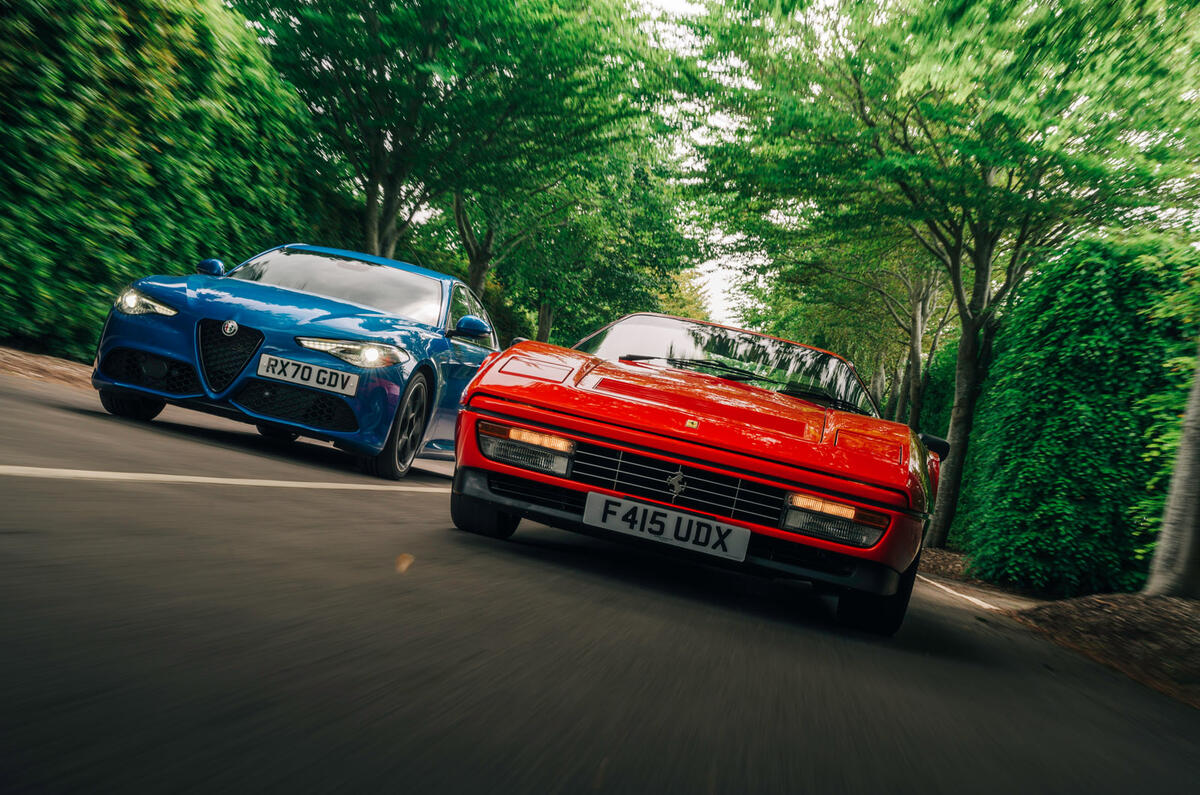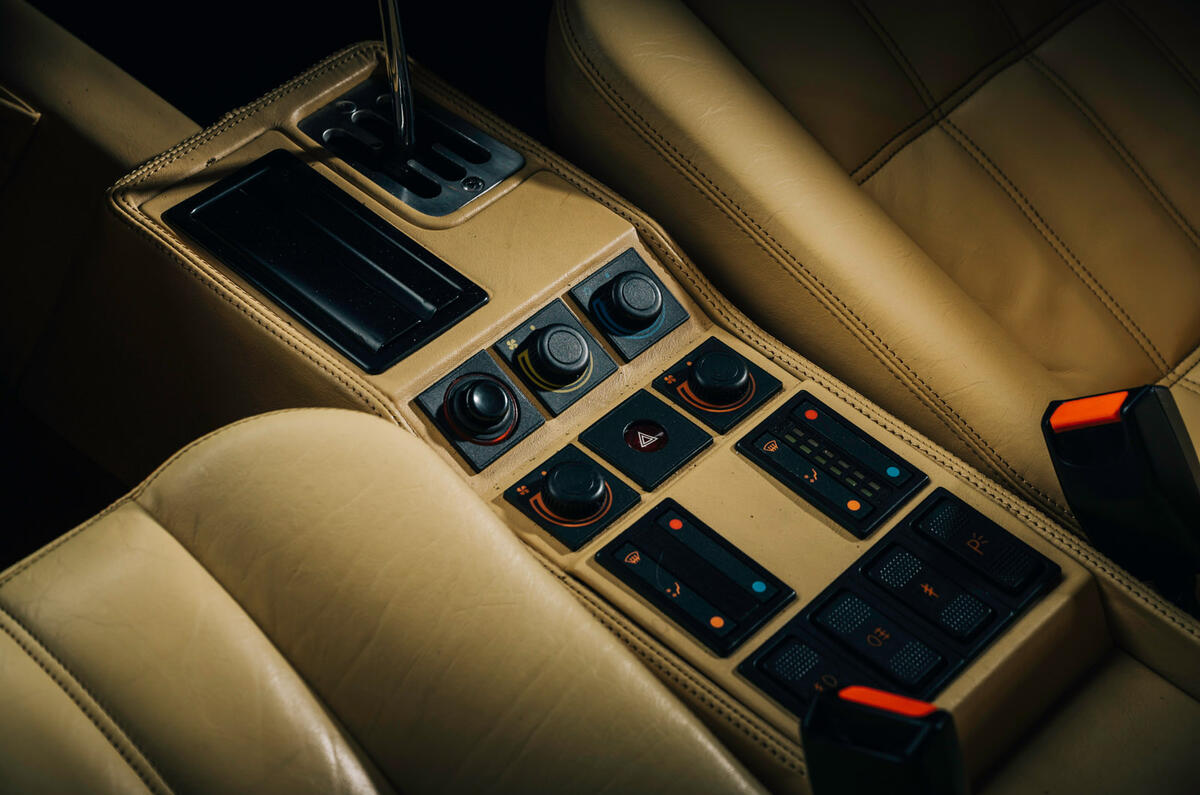Around the time I became a teenager, in the late 1970s, one poster among a tapestry of car-related pictures dominated my bedroom wall. It showed the 1979 Ferrari range, from the ‘entry’ 308 GT4 through the 308 GTB, 308 GTS and 512 BB to the 400i GT. Below each image were the vital statistics, and to this day I can remember every number – which either shows the prescience of Ferrari’s marketers, grasping that callow youths might actually go out and live their dream 40 years on, or simply that they could hook in yet more fledgling ambassadors to the brand.
Well, four decades later, I’m still Ferrariless, and while I would never call myself an ‘ambassador’ for Maranello, I do still harbour a soft spot for the models I grew up with – and perhaps you do, too.
Which got me thinking. Set to one side the mystique around Ferrari and others of its ilk and you had a range of cars that was, in theory, the pinnacle of automotive performance and dynamics at that time. But it’s also true that, as we near a time of mandated electrification for new cars, current internal-combustion-engined cars of all types are at their absolute zenith, too. Their rate of development has been furious over the past 30 to 40 years, but because it has been incremental, we sometimes lose sight of the sheer enormity of what car makers have achieved.
So, to prove the point, I’m taking my teenage fantasy (well, a slightly younger version, in the form of the 328 GTB, launched in 1985) and pitting it against a family saloon. Okay, I’ll qualify that: the Alfa Romeo Giulia you see on these pages is hardly a cooking commuter car, but neither is it a rip-snorting Quadrifoglio. It has a turbocharged 2.0-litre petrol engine delivering drive to its rear axle and happily returns 30mpg-plus without breaking a sweat. It can also accommodate five people and their luggage with ease and deliver them to a destination 500 miles away in air-conditioned comfort in one fell swoop. Oh yes, and it costs just a smidgen over £40,000. Not cheap, I grant you, but nowhere near supercar money.

In fact, cost is a good place to start. In 1987, a new 328 would have set you back £44,196, which equates to more than £127,000 in today’s money. Of course, that would have bought exclusivity in bucketloads, even in the affluent ’80s: Ferrari made just 7412 examples of the 328 between 1985 and 1989, and only 1344 of those were closed-top GTBs like the one you see here. Our car is even rarer for having the option of ABS. And, incredibly, this pristine 33-year-old arrives at Goodwood showing just 6700 miles on its clock – almost exactly the same as the nearly new Giulia that it’s now parked next to. In other words, as good an example of the model as you could imagine.
I won’t even bother to list what in-cabin tech the Alfa has and what the Ferrari lacks. The 328 didn’t even get a radio as standard when new, so let’s take comfort (or not, depending on your point of view) in the fact that the Giulia has a comprehensive infotainment system that would have left the Ferrari’s original owner in awe.
What’s more interesting is when you compare their powertrains. The Ferrari has a transversely mounted atmospheric V8 of 3185cc capacity located amidships, with drive sent via a five-speed manual gearbox to the rear wheels. Maximum power is 270bhp at a rather giddy 7000rpm and torque peaks at 223lb ft at 5500rpm. That the Giulia produces a near-identical 276bhp in its Veloce form is no great surprise, but the fact that it achieves it using half as many cylinders with nearly 1200cc less than the 328 gives a measure of how much more efficient engines have become. Turbocharging has been key to this, obviously, and it also explains why the Alfa not only produces 72lb ft more torque (295lb ft in total) but also does so 3750rpm lower, at just 1750rpm.
Remarkably, a mere 81kg separates their kerb weights (the Ferrari is 1348kg, the Alfa 1429kg), meaning that the Giulia trades just 7bhp per tonne to the 328’s 200bhp per tonne. So it’s no surprise that each reaches the benchmark 60mph from a standstill in near enough 5.5sec.
To drive each car and experience what these numbers mean in the real world is a bit like comparing listening to your favourite album on a high-end turntable with enjoying the same tracks as digital files on your phone. Plonk yourself in the Giulia and within seconds, no matter your size, you’re ensconced, snug and sitting low, with all controls within perfect reach. It feels, as you would expect, like the car fits around you.

Push the wheel-mounted start button, snick the stubby selector into D and away you go with no drama – with the result that it’s almost too easy to be breaching acceptable speeds in short order.
When you first sit in the 328, you realise how far three decades of ergonomic development has brought us. For starters, while I’m compact enough to avoid contact with the rooflining, at 5ft 7in (my 6ft 2in colleague isn’t), my arms are stretched to reach the non-adjustable Momo steering wheel (sans airbag), which in turn is angled away from you, forcing a police-style hand-to-hand steering style when you manoeuvre the car. My legs are also canted left to reach the pedals.
But then you look down and see that open-gated, chromed gearshift surround, with its spindly lever, feast your eyes on no fewer than seven analogue dials and then marvel at the amount of open space around the cabin and the fine view out afforded by its narrow A-pillars.
The gnarled, twisting South Downs roads near Goodwood generate a torrent of contrasts between saloon and supercar. Given that the Alfa is 388mm longer, 130mm wider and 308mm higher than the Ferrari, its structure is, if anything, even stiffer, with no discernible flex. I would wager that advances in structural engineering have probably had more effect on a car’s handling, control and safety than any other single element.
That said, the Ferrari feels tight, alert and biddable, its 225/50 rear tyres (60-profile originally) and 205/55 front tyres on 16in rims giving grip aplenty. And while it’s firmly sprung, well-judged damping makes it a joy as speeds increase, allied to unassisted steering rich in feel and feedback (as well as some kickback). But steering is where the Giulia can’t compete. Sure, it’s a lot quicker (2.3 turns from lock to lock, versus 3.25 for the 328) and lighter at all speeds, due to assistance, but it never engages in the same way as the Ferrari’s helm.
I said earlier about how easy it was to access the Alfa’s performance, but that’s not true of the Ferrari. Compared with the flick of a wheel-mounted paddle, manually shifting through its open gate inevitably requires greater focus – although the satisfaction gained from using it to extend one of the greatest-sounding V8s near to its 8000rpm redline is something that will remain with me for a long time. Ever-more stringent drive-by noise regulations have, unfortunately, robbed the Alfa of anything approaching aural nirvana.

There’s no better illustration of the unstinting progress made by the car industry in the past 30 years than driving both of these cars back to back. The Giulia is objectively in another league to the Ferrari at almost every level, and that should be applauded. But these are both performance cars and, as such, they should each exist to engage drivers at a level beyond the norm. And they do, in different ways. In the Alfa, that engagement starts at speeds that approach the boundaries of social acceptability; in the Ferrari, the thrill – and that’s really what it is – can be found at any speed.
Yesterday's supercars versus today's hatchbacks
2021 VW Golf R vs 1981 BMW M1: Unlike the Italian pairing, here we have a modern sub-£40,000 family hatchback that trounces its homespun supercar forebear in the power and performance stakes. Even by today’s standards, the Golf R comes close to upsetting supercar royalty but, versus the M1, which was made between 1978 and 1981, it produces an extra 43bhp and 67lb ft of torque and accelerates to 60mph nearly 2.0sec quicker. The M1 is a bona fide homologation special, too, and the first to be fully developed by BMW’s now famous M division. As with the Giulia, turbocharging gives the Golf R much of its power advantage, despite trading two cylinders and 1.5 litres to the M1’s straight six. Some of the M1’s mid-engined handling characteristics could probably even be replicated by the Golf R’s new Drift mode, plus Volkswagen’s Haldex four-wheel drive system would guarantee it the traction needed for victory in any drag race against the old supercar.
2021 Honda Civic Type R vs 1990 Honda NSX: This is the only pairing here from the same manufacturer, and one in which both cars’ names have been applied to more than one model. You could certainly argue that the original NSX represented leading-edge supercar technology when it was revealed in 1989, but while it was actually benchmarked against the Ferrari 328, it moved the game on by offering greater reliability, lower purchase and running costs and ergonomics that even today are impressive. More than 30 years later, the Civic Type R hatchback somehow manages to match the NSX’s headline numbers (5.8sec from 0-62mph and a 169mph top speed play the NSX’s 5.7sec and 168mph), while having gained only 30kg over its supercar ancestor, with a kerb weight of 1400kg. That the Civic Type R’s 316bhp and 295lb ft (versus the NSX’s 256bhp and 208lb ft) are extracted from a 2.0-litre four and not a 3.0-litre six shows once again how blown engines have changed everything. And, of course, the Civic Type R can accommodate five people plus their luggage.
2021 Mini JCW GP vs 1988 Lotus Esprit Turbo: One could argue that 33 years of evolution haven’t quite blessed the Mini John Cooper Works GP with many clear advantages over what was probably Britain’s only genuine 1980s supercar, the Esprit Turbo. This is partly down to Lotus’s prescience, developing a blown four-cylinder engine for its range-topper (which could reach 60mph from rest in around 5.5sec and hit 150mph), but also the fact that the JCW GP is sadly lacking in key dynamic areas (we called it “a muddled and frustrating car”). Both are two-seaters, both weigh less than 1260kg and both have a turbocharged four (although the hot hatch’s produces almost 100bhp more than the supercar’s, at 302bhp, plus nearly 70% more torque). There’s no doubt that you would be more reassured about reaching a long journey’s end in the Mini, but this is one pairing that perhaps proves that progress needs to be more than the sum of a car’s components.
Simon Hucknall
READ MORE
Ferrari to launch first EV in 2025

























Join the debate
Add your comment
"The common denominator of these cars: Dubious reliability. It took me three comments to finally write it right. My spelling reliability is dubious, too."
common ingonarance of this commentator. I really dont know how reliable Alfa should be that it would be enough for you. When Giulia is more reliable than any its German competitors.